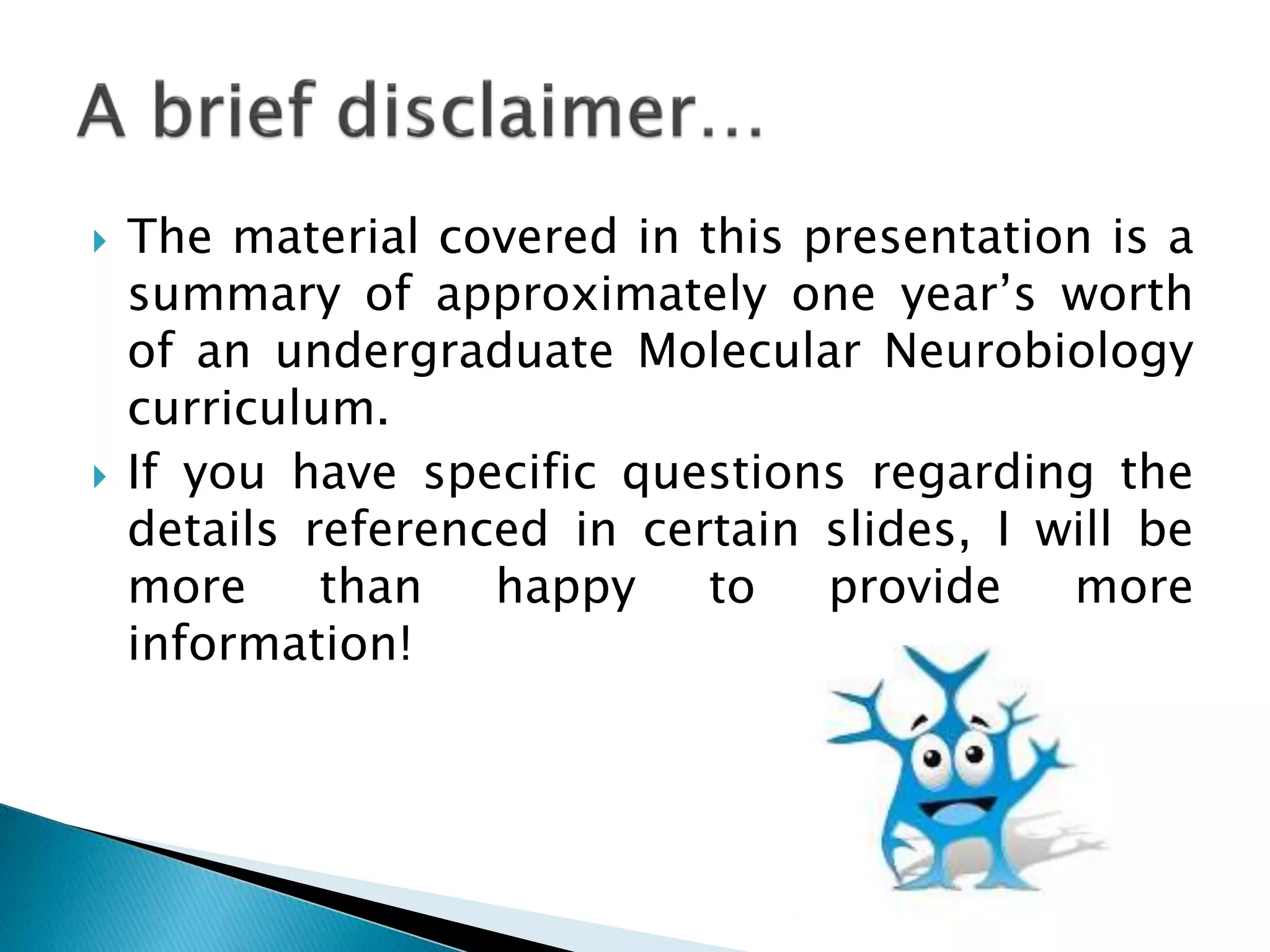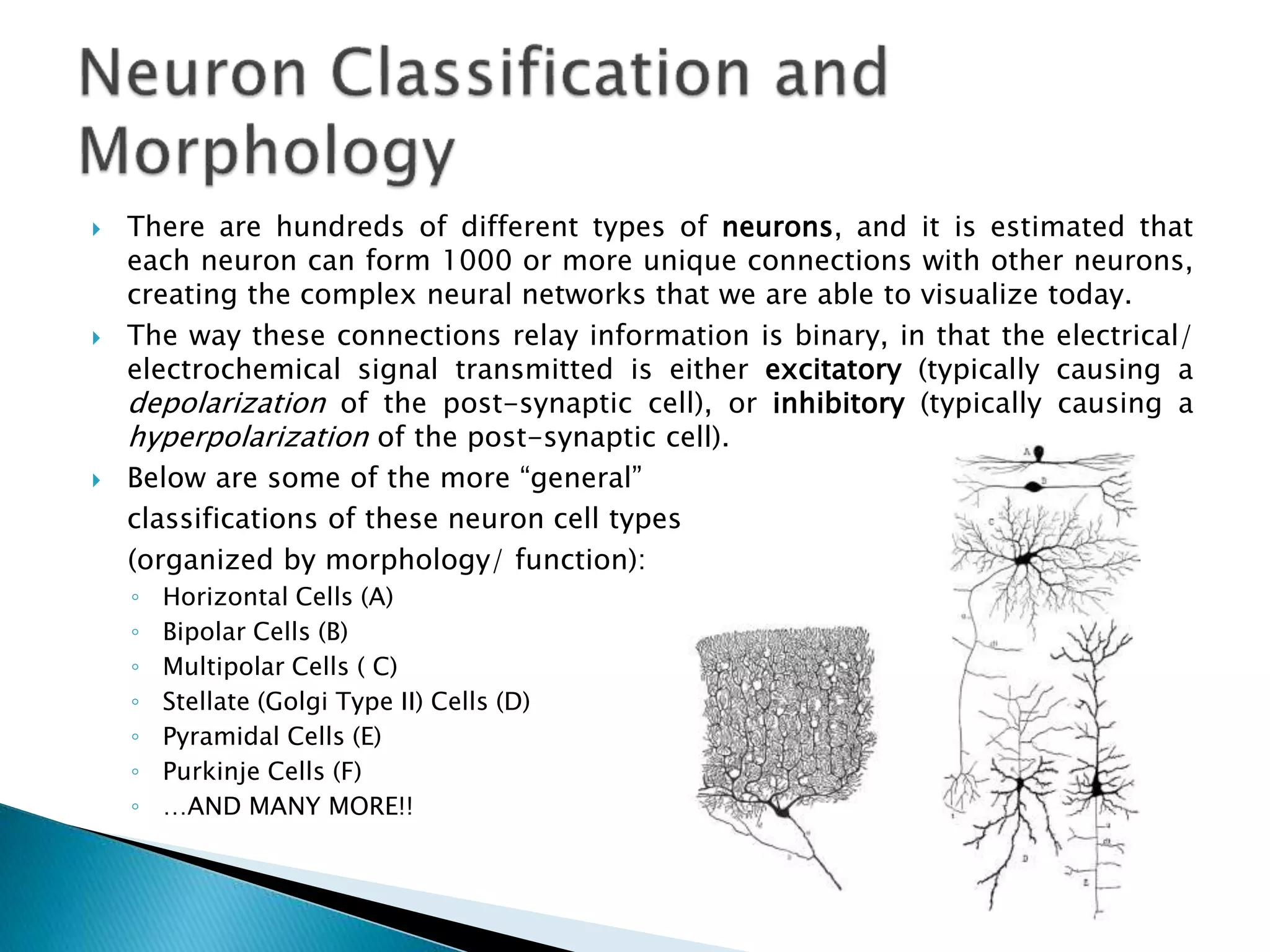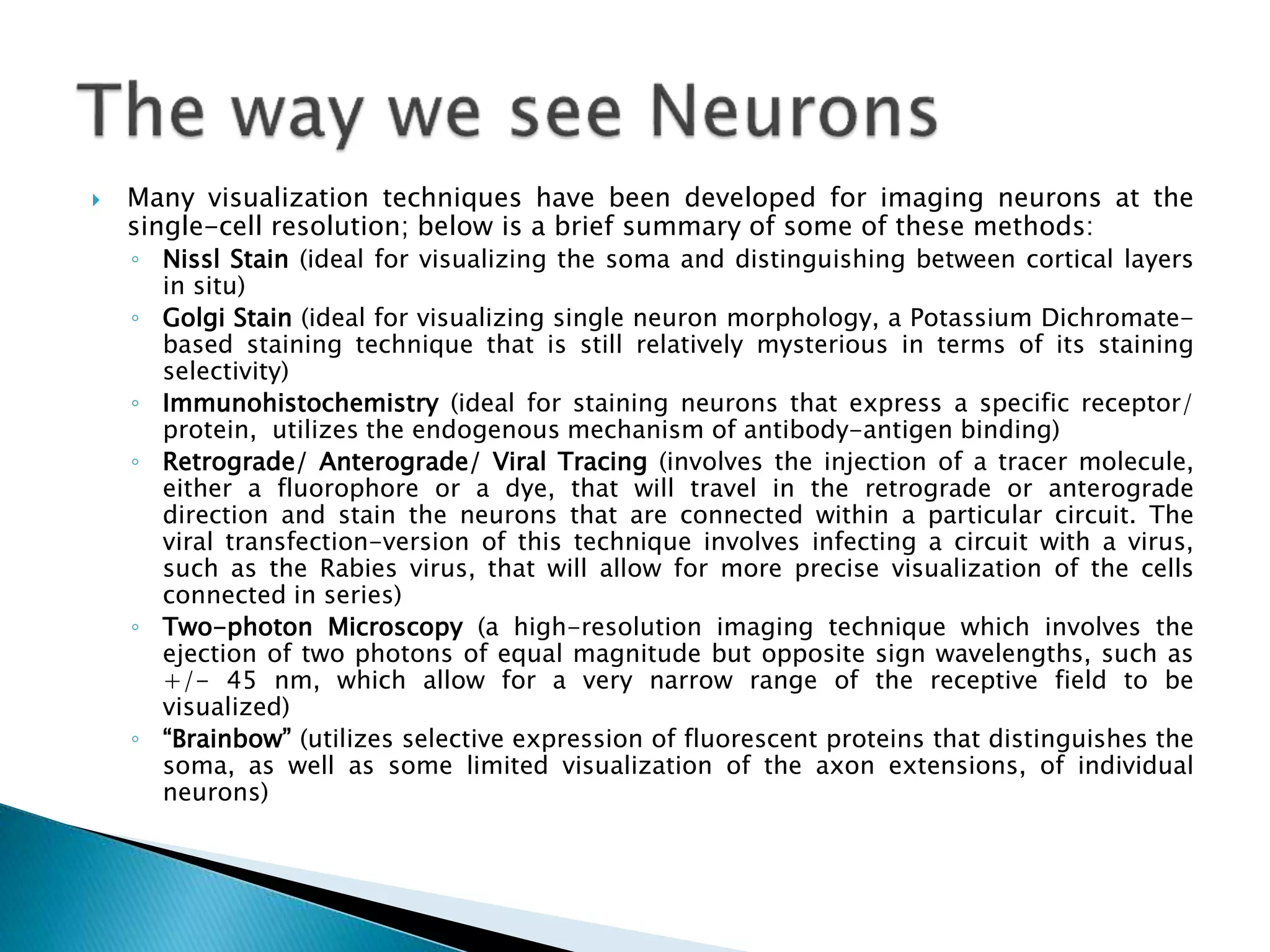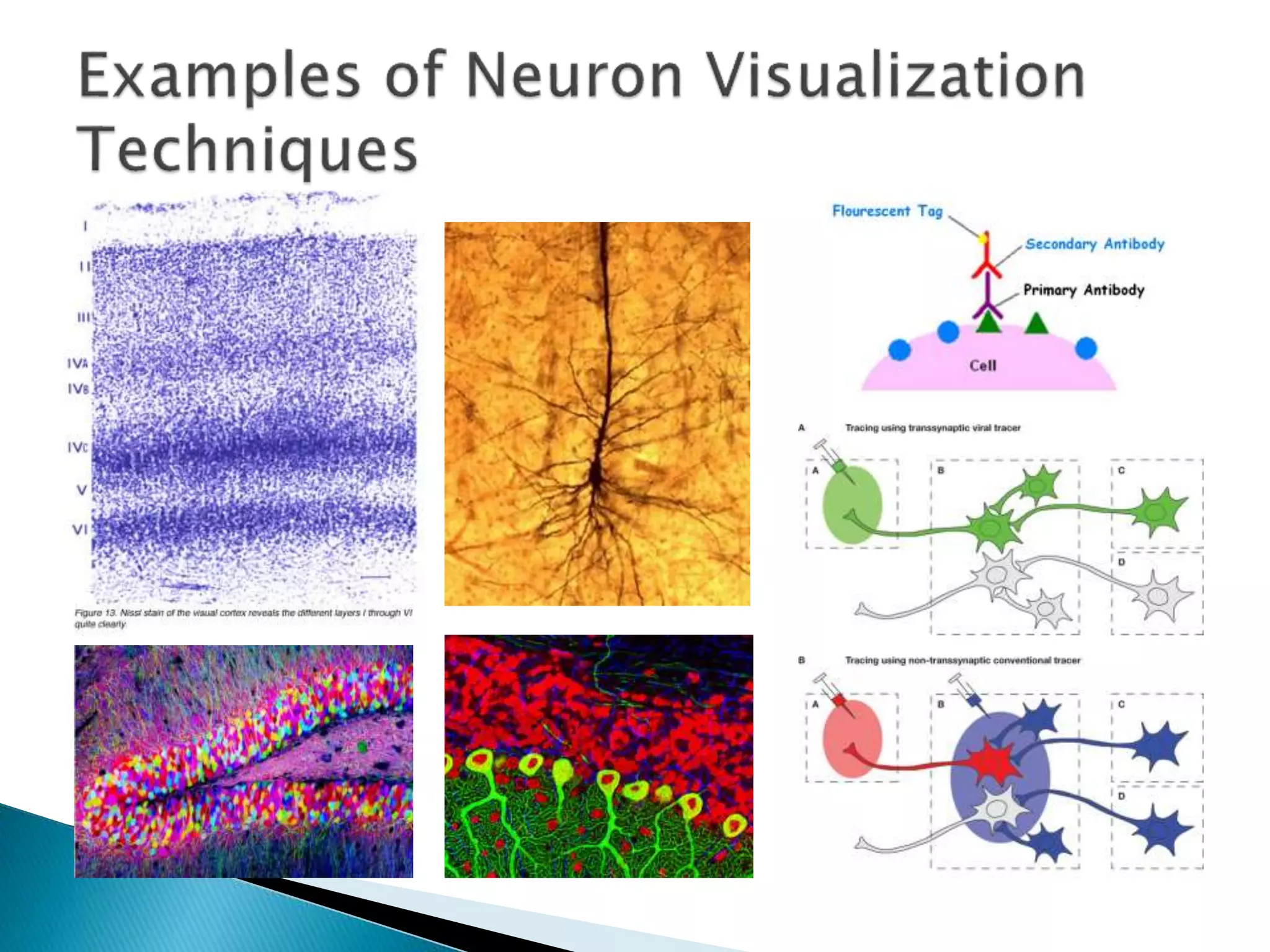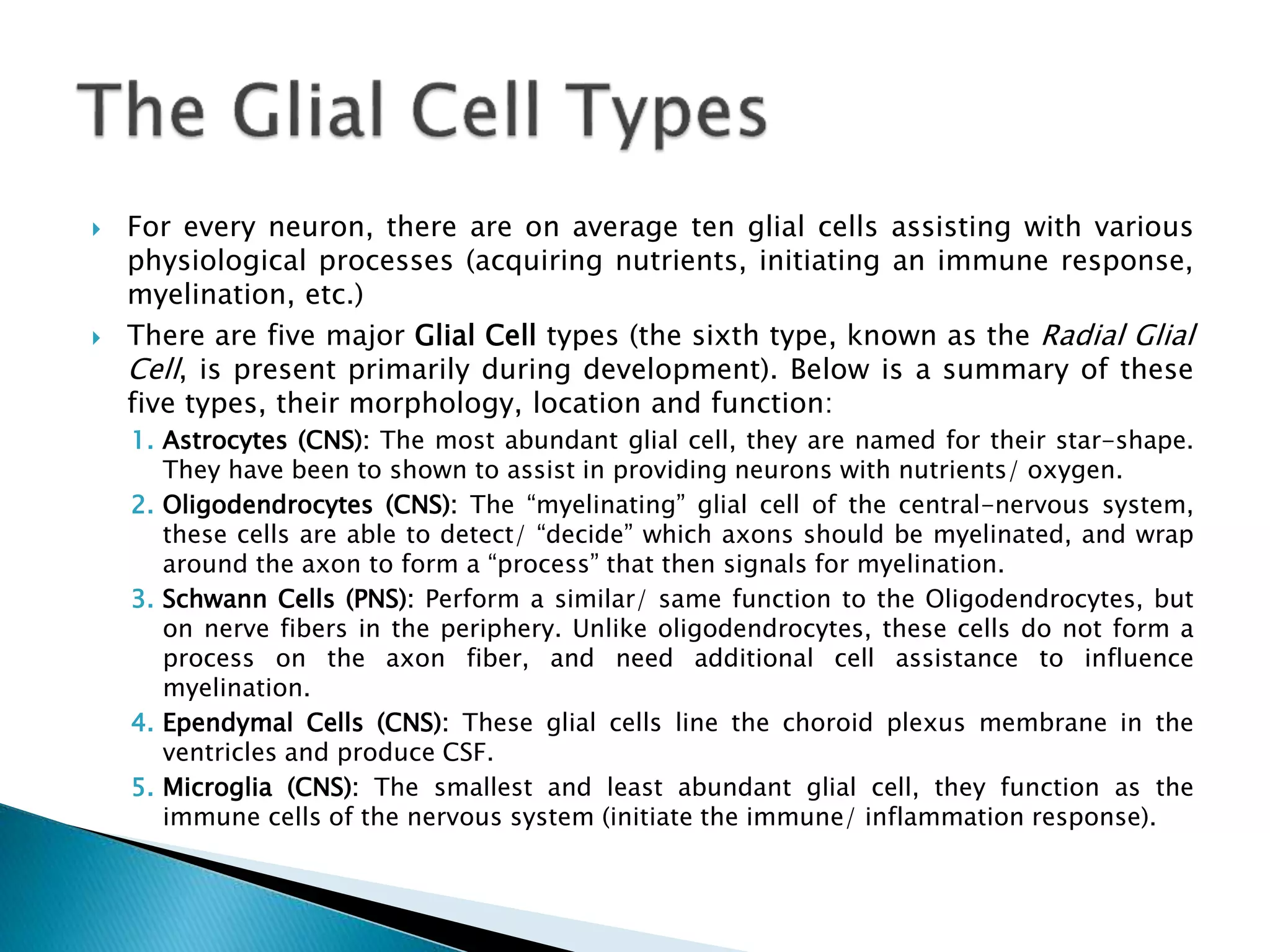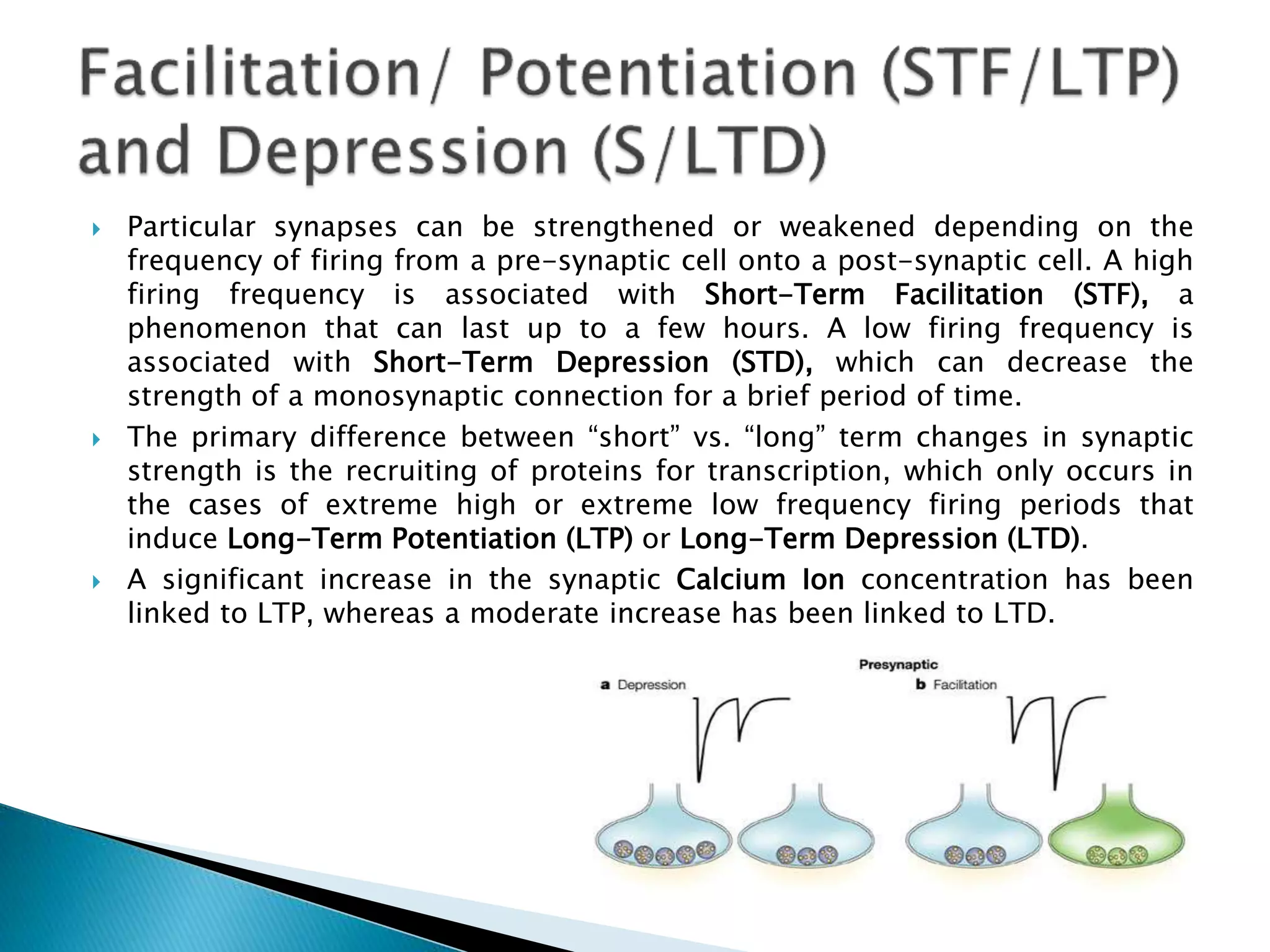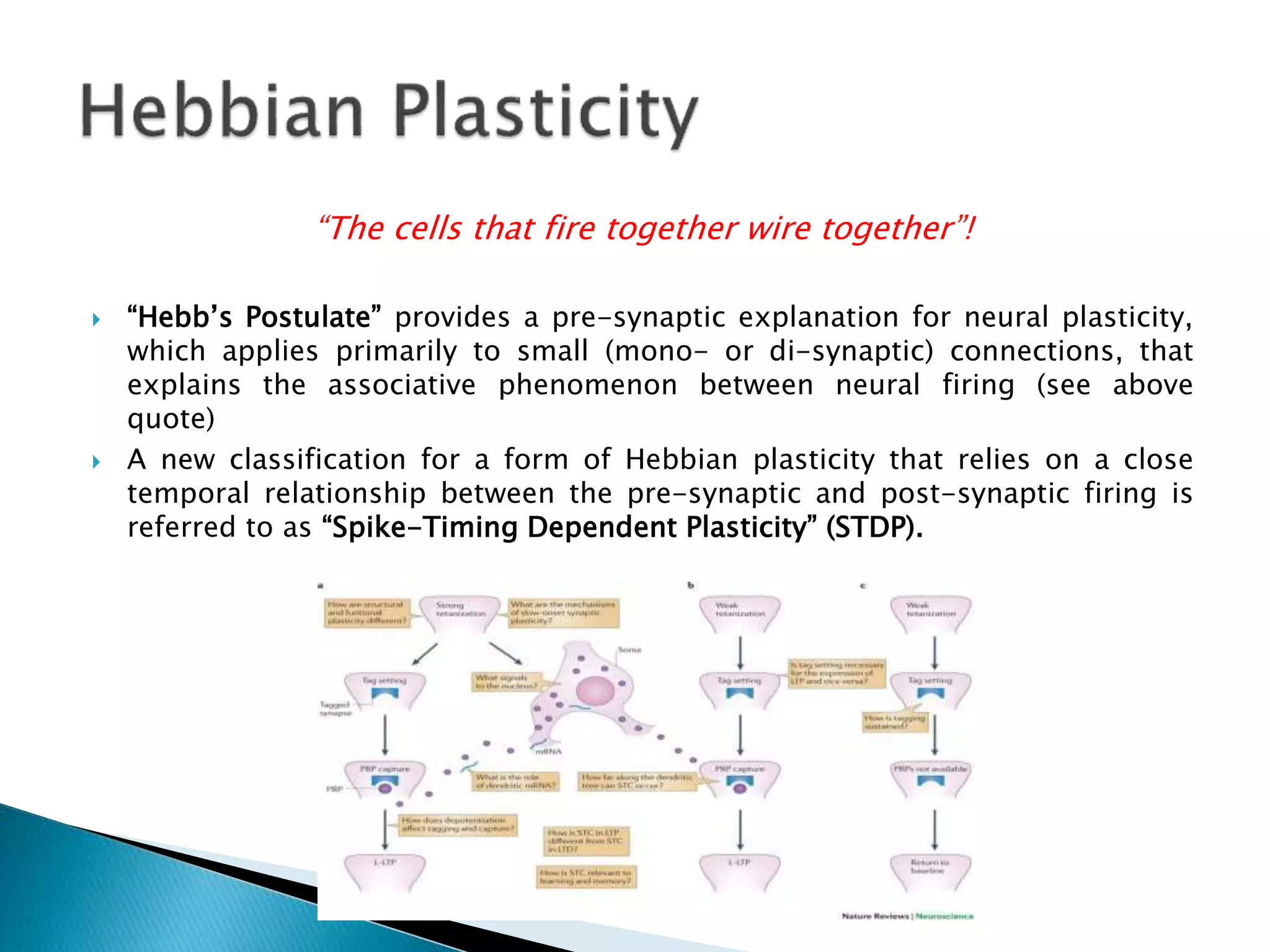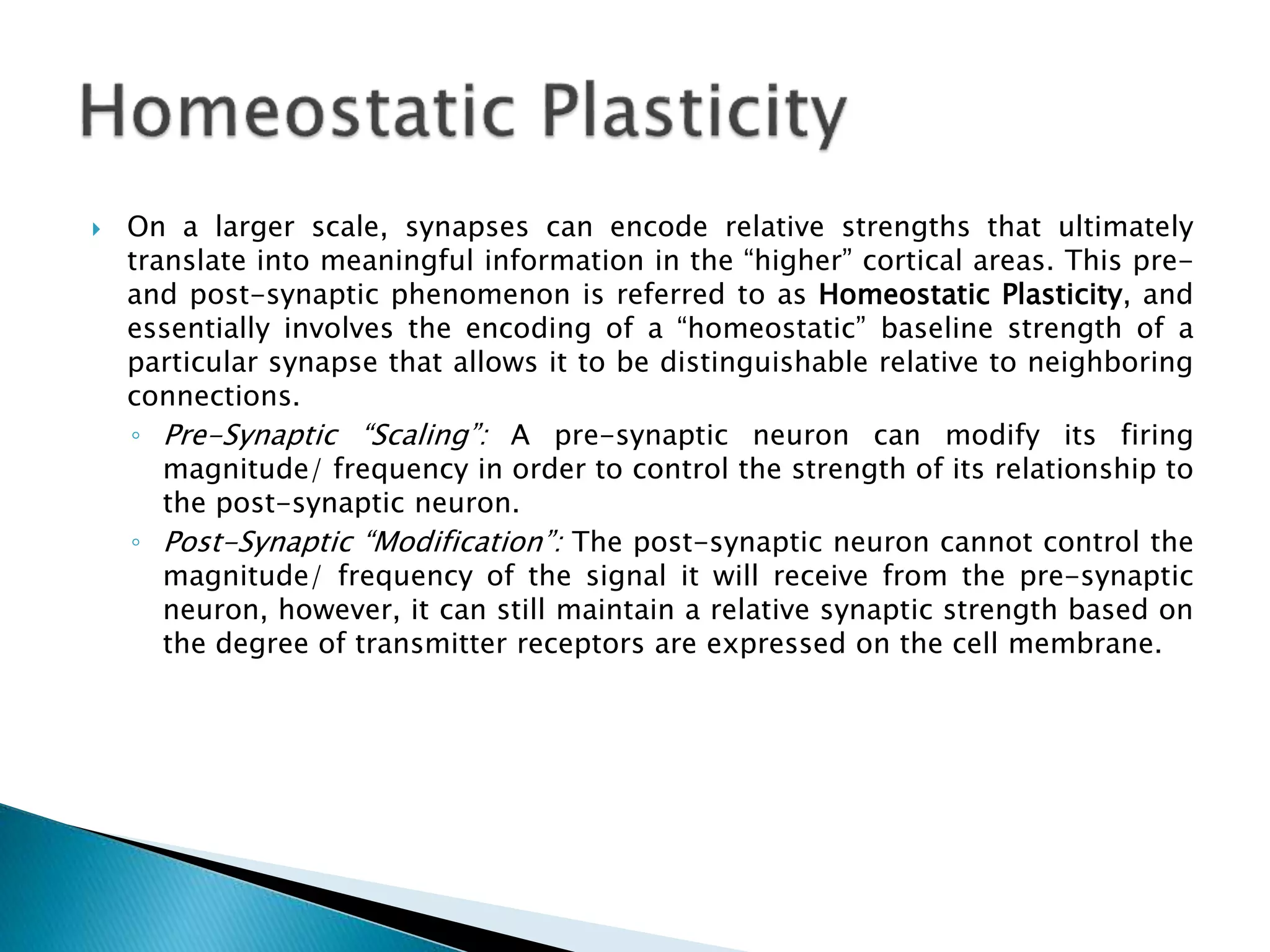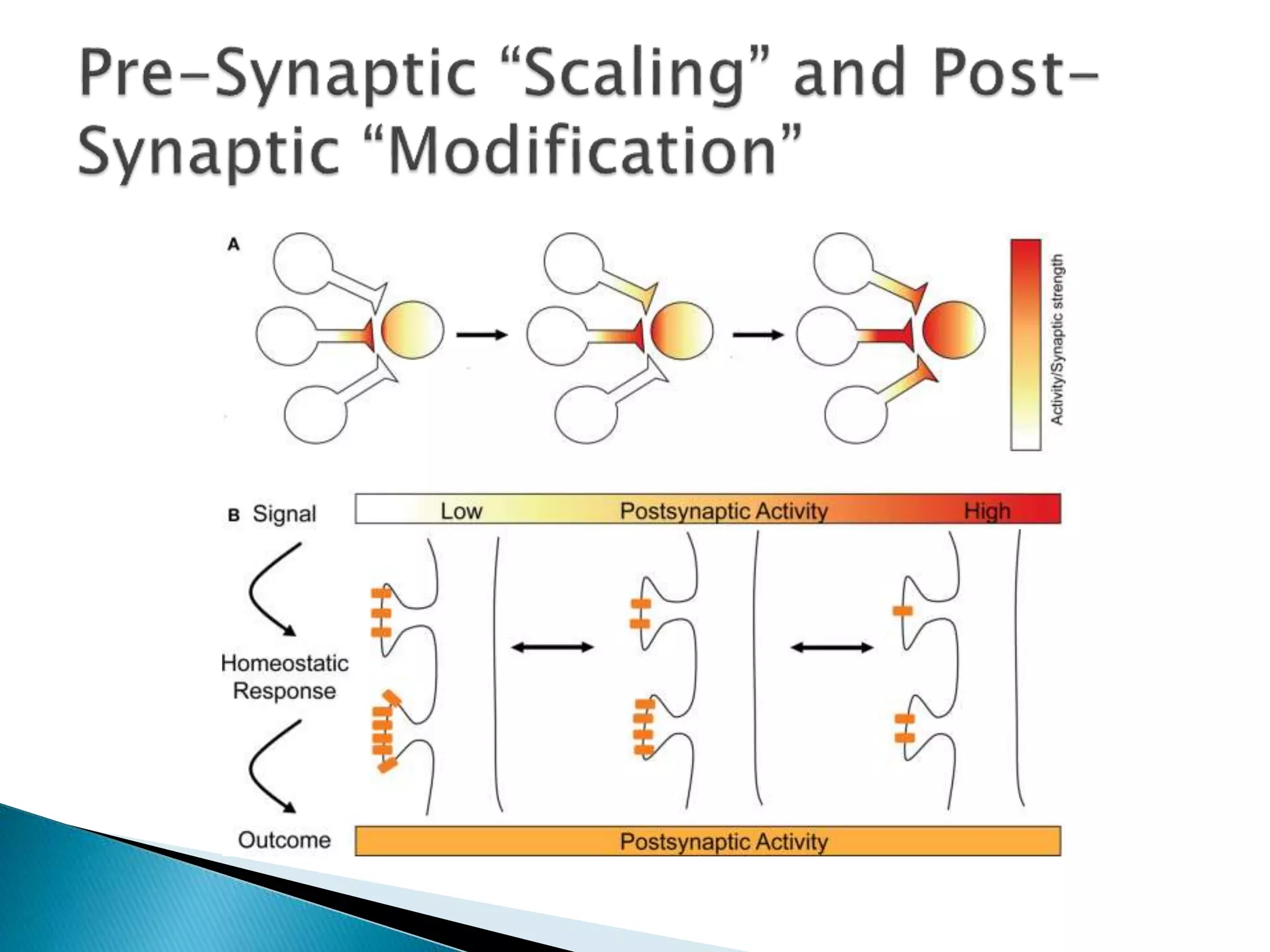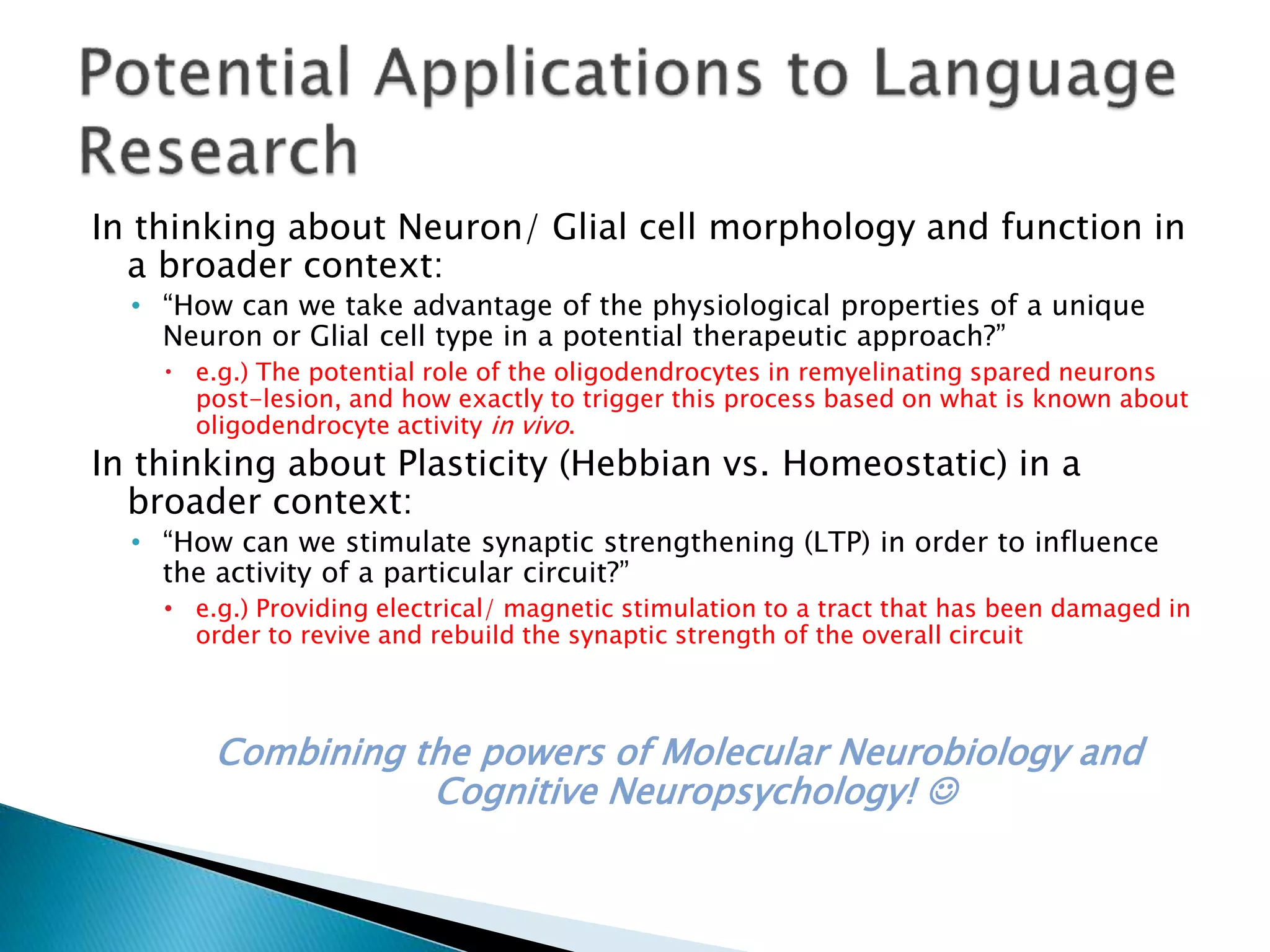This document summarizes information presented about neurons, glial cells, and neural plasticity mechanisms. It describes the different types of neurons and glial cells, how they connect and function. It discusses various techniques for visualizing neurons. It also summarizes concepts of short and long-term synaptic plasticity mechanisms like LTP and LTD, and how the strength of connections between neurons changes based on their firing patterns over time through processes like Hebbian and homeostatic plasticity. The document encourages thinking about applying this neurobiology knowledge to develop potential therapeutic approaches.

